 |
North
High School Wall of Honor
Donald Arthur Ash
Would have graduated in Class of 1943;
Awarded diploma in June, 1946. |
 |
 |
|
Research done by Claradell Shedd, class of 1953. PAGE IN PROGRESS |
| Donald
Arthur Ash |
|
Don would have graduated from
North High in the class of 1943. He enlisted in the Navy in
1941. He was awarded a diploma from North High in June, 1946.
His service number was 3217506. His next of kin was his mother,
Mrs. Bertie Ash, 1603 University Avenue, Des Moines, IA.
|
| Donald Arthur Ash |
 |
| Year |
x |
Rank |
x |
Status |
 |
| December,
1941 |
x |
Enlisted/
US Navy |
x |
Enlisted at Polk
County Court House, Des Moines, IA |
| 1943 |
x |
x |
x |
Would have graduated
from North High, Des Moines, IA |
| January
17, 1942 |
x |
US Navy
|
x |
Six weeks at USNH,
US Naval Training Center, Great Lakes, IL/ US Hospital Corps
School |
| date |
x |
US Navy/
Hospital
Apprentice3- HA3 |
xx |
By rail to US Naval
Hospital, Portsmouth, NH to complete basics |
| date |
x |
x |
x |
By rail via New Hartford, New
Hampshire, and Connecticut Railroad to NY |
| date |
x |
Training |
x |
Brooklyn Naval Barracks; Mobile
Hospital #8; eventually Fleet Hospital 108. For mobile hospitals,
we learned here: The supplies, equipment, and buildings
for all mobile and base hospitals were procured by the Medical
Supply Depot, Brooklyn, N. Y., and each hospital was commissioned
there. During the period of assembling and packing the hospital
supplies and equipment, the hospital staff assembled at
the Depot, where they were indoctrinated in the methods
of hospital construction and outfitting and were advised
regarding the methods of identification of the packed and
crated equipment. |
| early, 1943 |
x |
x |
x |
By rail to Terminal Island,
CA. Shipped via *SS Elihu Thompson (called a Henry Kaiser
coffin) from Fort Hueneme, CA to Espiritu Santo, New Hebrides |
| 1943 |
x |
Enroute |
x |
To Guadalcanal via
New Zealand minesweeper. Took Higgins boat ashore. |
| date |
x |
US Navy
Pharmicist Mate 2/C |
x |
At Guadalcanal to clear and
survey area for mobile hospital.
**See comments below by Captain Turville from Mobile Hospital
8. |
| late
1944 |
x |
Enroute |
x |
To Naval Advanced
Base; Russell Island, Solomon Islands. Suffered concussion. |
| 1945 |
x |
Enroute |
x |
From Fleet Hospital
108, was shipped back to San Francisco on ***USS Roi (CVE-103)
or ****USS Munda (CVE-104) and then to Chicago to the Wesley
Memorial Hospital. |
| late
1945 |
x |
US Navy/
PhM1/C; V6 |
x |
Honorable discharge;
US Naval Pier, Chicago, IL |
| 1945-Present |
x |
Civilian |
x |
Living in OR and
AZ. |
|
*SS
Elihu Thompson (Hull Number 0427)
Later (CINCPAC Communique No. 139; October 3, 1944):
The SS Elihu Thompson, a Liberty ship operated by the War Shipping
Administration and chartered by the Navy, struck a mine while
entering a South Pacific port on September 25. Eleven Army personnel
on board the vessel were killed by the resultant explosion and
22 are missing. No casualties were suffered by Naval or Merchant
Marine personnel. Survivors were removed from the Thompson
by patrol craft and the ship's own boats, and a Navy salvage unit
took the vessel in tow and beached her. The ship can be restored
to service. All next of kin of casualties have been notified.
Liberty ships carried a crew of about 44 and 12 to 25 Naval Armed
Guard. Some were armed with (1) One 3" bow gun; (2) One 4"
or 5" stern gun; (3) Two 37mm bow guns; and (4) Six 20mm machine
guns.
A Liberty ship was usually 441 feet long and 56 feet wide. Her
three-cylinder, reciprocating steam engine, fed by two oil-burning
boilers produced 2,500 hp and a speed of 11 knots. Her 5 holds
could carry over 9,000 tons of cargo, plus airplanes, tanks, and
locomotives lashed to its deck. A Liberty could carry 2,840 jeeps,
440 tanks, or 230 million rounds of rifle ammunition. |
| **Comments
by CaptainWilliam H.H. Turville, Mobile Hospital 8, Guadalcanal |
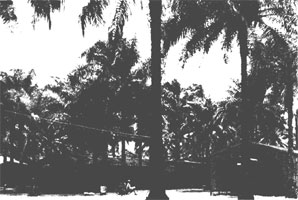 |
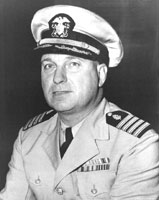 |
|
City Doctor Builds
Jungle Hospital
Guadalcanal Mobile Unit Treated 23,000 and Saved All But
51 |
At a point in the Guadalcanal
jungles X miles inland from the northern coast, there is
a small rectangular building with eight windows that are
nearly always shuttered.
It is made of corrugated metal, painted black on the outside
and lined with plaster wallboard. The room is furnished
bleakly, and in the half-light that comes through the shutters,
the walls seem to press inward.
This is a building that no one wants to enter. It is a morgue
- but a morgue with a story all its own.
When the building was finished on the 103 acre reservation
of the Navy's Mobile Hospital No. 8, one corpsman turned
to another and asked, "Think they'll use it much?" |
Story Available
Today, almost a year later, when
all enemy resistance in the Solomons has been neutralized,
the answer - and the story of the morgue - is available.
From the time it opened last August 7, 1942
until May 16, 1943 of this year, the mobile hospital admitted
23,000 patients, 70% of those Marines.
Of that number, only 51 - or less than one-quarter of one
percent - were taken to the morgue. The rest lived, many
to fight again. This low death rate has started Navy gossip
that Mobile Hospital No. 8 will receive a unit citation,
but if this is true, Captain William H.H. Turville, its
first commanding officer, has heard nothing about it.
Captain Turville, 49, a native Philadelphian who has been
in the Navy 27 years, was detached from the hospital May
6, after leading it since its formation in August, 1942.
Captain Turville told about the hospital while sitting at
ease in his home at 2401 North 21st Street. |
|
First They Had to Build It
After his staff of 50 officers, 300
enlisted men, and 73 Seabees assembled in New York, Captain
Turville read them their orders: they were to operate
a hospital in the jungle, but first they would have to
build that hospital.
Hands that once held scalpels would now have to thread
pipe; a dermatologist learned the grease-coated parts
of a refrigerator; a urologist turned to the technique
of handling large steel sheets for the building walls.
Following training in New York and on the West Coast,
the group went to Guadalcanal where Captain Turville and
his engineer picked out a hospital site, paying special
attention to a water supply, drainage, and natural camouflage.
The ground was cleared and the building started, but shortages
developed. Nails ran out; the doctors used nails extracted
from packing crates. There were no hinges for cabinet
doors; airplane wing parts were hammered into hinges after
the planes had crashed. There were no Mayo tables to hold
surgical instruments; pipes and trays were wielded together
to meet the need.
On August , 1942, one year after the Americans had surged
back into Guadalcanal in 1942, the hospital opened its
door and 400 patients were promptly admitted. (Question
date of the hospital's opening)
|
Building Continued
Still the building continued: a water
pumping station capable of getting 350 gallons a minute
from the Tenaru River was completed; six generators turned
out 400 kilowatt hours of elecric power; 36 wards were finished
to hold 1750 single beds or 2500 double beds; operating
rooms were multiplied until 2,300 operations were performed
between August 7, 1942 and May 16, 1943.
All of this occurred while the men were meeting opposition
from nature and Japs. Nature allowed the temperature to
change as much as 35 degrees in a single day. In the rainy
season, a ditch 20 feet wide, six feet deep, would be filled
in a single sudden spurt of rain. The humidity was always
close to the saturation point, and men, animals, and machines
alike were affected.
Thirty times while Captain Turville awas on Guadalcanal,
the Japs sent bombers over the hsopital. Some bombs exploded
as close as 300 feet to the reservation, and patients and
doctors huddled in bomb-proof shelters; that is, all except
those who were too ill to be moved. For those men, Captain
Turville ordered corpsmen to put mattresses on top of the
patients and then crawl under the springs, waiting in case
they should be needed for emergency aid. |
Water Main Hit
A Jap bomb once hit the four inch water
main, leaving the hospital without a source of fresh water
for 18 hours, but tanks with a 176,000 gallon capacity kept
the hospital supplied until repairs could be made.
Operating rooms at the hospital were equipperd with the
most modern appliances. From one of the Solomon Island battles
came a Marine with a Jap bullet lodged in the muscles of
his heart. Surgeons cut away a portion of his ribs, tore
back the flesh shield over the heart, and extracted the
bullet. The Marine is still alive.
In the hospital's early days, the staff was always tense
when a radio message would come that a load of casualties
was approaching. Receiving wards were cleared, doctors stood
by; corpsmen and nurses were on edge. Then the casualties
would arrive; some by plane, some by ship. They would be
sent to the receiving wards, classified, and sent to wards
and operating rooms for immediate treatment.
After a time, however, so many casualties came to the hospital
that the early tension vanished; it was just another job.
|
|
| USS
Roi; CVE-103 |
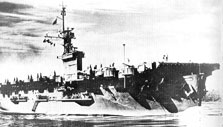 |
|
***USS
Roi (CVE-103)
World War II
Following shakedown off San Diego, Roi was assigned to the
Carrier Transport Squadron which carried planes, equipment, and
men to forward bases. On 13 August 1944, she steamed for Espiritu
Santo and Manus Island, loaded with 287 passengers and 71 planes,
returning to San Diego on 27 September. Underway again for Manus
on 21 October, she returned to San Diego before departing on 2
December on a third voyage which took her to Eniwetok and Guam.
Following overhaul at Alameda, California, Roi
made two round-trip voyages to bases in the Marshall and Mariana
Islands before returning to Pearl Harbor to begin carrier refresher
operations in preparation for her new duty as a replenishment
carrier for the fast carrier task force of the 3rd Fleet.
Loading 61 replacement aircraft in a 30-day combat ready state,
Roi sailed to Guam, where she reported to Task Group 30.8 (TG
30.8). Her duties were now to furnish pilots, crewmen, planes,
and aviation supplies to the carriers of Task Force 38 (TF 38)
on rendezvous days following their attacks on the Japanese home
islands. Roi got underway on 4 July with Admiralty Islands,
Hollandia and Thetis Bay, and met TF 38 at sea on 12 July, 16
July, and 20 July, retiring to Guam on the 21st to reload. She
got underway on the 27th with 61 more planes, and joined the
fast carriers on the 31st. Returning to Guam, the ship reloaded
and met the task force again on 14 August, just prior to the
cessation of hostilities, then remained with the 3rd Fleet off
Japan in preparation for the occupation.
Following the end of the war, Roi was used in "Magic-Carpet"
operations, returning veterans to the United States for discharge.
|
| USS
Munda; CVE-104 |
 |
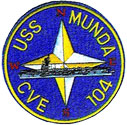 |
|
***USS
Munda (CVE-104)
World War II
USS Munda (CVE-104) was a United States Navy Casablanca-class
escort aircraft carrier. She was the last of the series to be
built.
More Casablanca-class carriers were built than
any other single class of aircraft carrier in history, and the
last to be built on the Liberty Ship platform; the Commencement
Bay class escort carrier which followed was designed from the
keel up as a carrier.
She was laid down on 29 March 1944 under Maritime
Commission contract as MC hull 1141 by the Kaiser Shipyards, Vancouver,
Washington, originally designated ACV-104, and redesignated CVE-104
on 15 July 1944. Originally named Tonowek Bay on 23 September
1944, the carrier was renamed Munda on 6 November 1944, in honor
of the battle to take Munda Bay in the Solomon Islands. It was
during this fight that Rodger Wilton Young was killed. Some commemorative
photographs of the ship gave the name as Munda Bay.
After a west coast shakedown, Munda, assigned to Carrier Transport
Squadron, Pacific Fleet, got underway independently on 16 August
1944 on her maiden voyage. With 71 planes and 202 passengers crowded
aboard, she arrived at Espiritu Santo on 1 September. Proceeding
next to Finschhafen and Manus Island, she returned to Alameda,
California for brief availability, before setting out again to
carry replacement planes and personnel to forward areas. Returning
from her second supply run on 5 December, she was underway again
on the 12th. She completed three more runs to various islands
in the Pacific before mid-1945, when she sailed for Eniwetok on
3 July. There, she joined Task Group 30.8 (TG 30.8) and commenced
supplying planes pilots, and aviation stores to the fast carriers
of Task Force 38 (TF 38). |
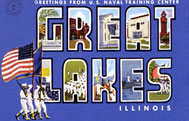 |
 |
| Great
Lakes, IL |
Higgins
Boat |
|
Donald
Arthur Ash
Pharmacist Mate 1C
US Navy |
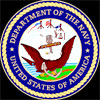

|
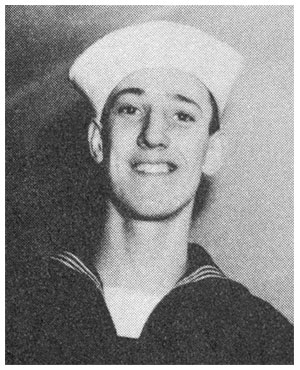
|
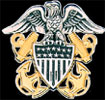
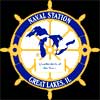

|
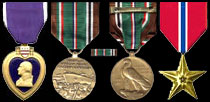
Sample of medals. |
|
|
| References |
|
A comprehensive list of names from North High's 1893-2019 graduation
classes are from Claradell Shedd's North Des Moines High School
website. The names of North High School graduates can be found
online at: http://ndmhs.com/.
Donald Arthur Ash's 1943 class can be viewed at: http://ndmhs.com/pages/yearclass1943(2008.65).html. |
 |
|
| 010/03/10:
Living in OR and AZ. |
| Music:
"Anchors Aweigh" by the U.S. Navy Band |
Home
|
Back/allyears |
WWI |
WWII |
Korea |
Vietnam |
Afghanistan/Iraq |
Lyrics
|
Refs/Awards |
Contact
©2025-csheddgraphics All rights reserved.
All images and content are © copyright of their respective copyright
owners. |
|















